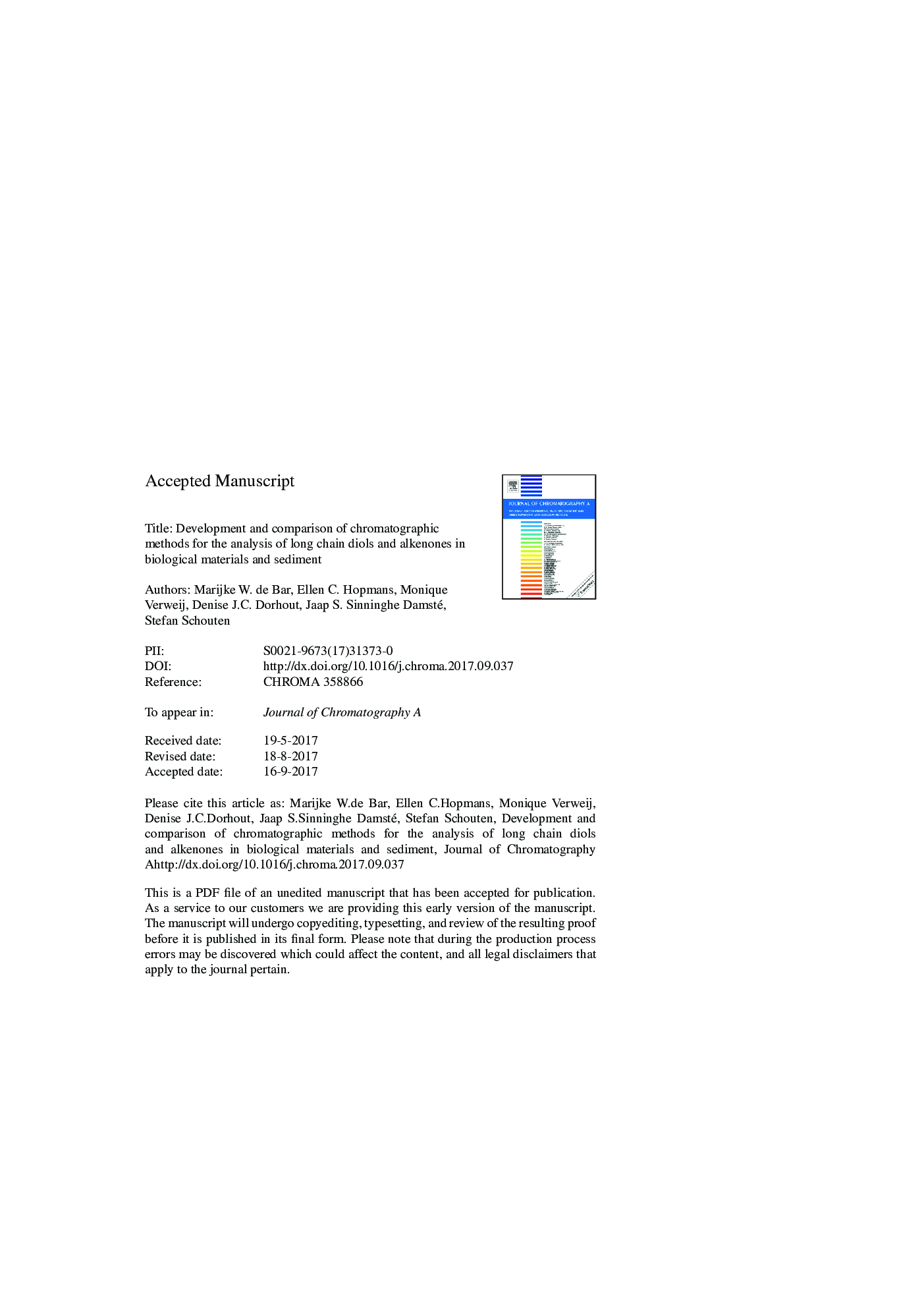| Article ID | Journal | Published Year | Pages | File Type |
|---|---|---|---|---|
| 5134842 | Journal of Chromatography A | 2017 | 46 Pages |
Abstract
Automated silylation by a robot autosampler showed similar reproducibility as off-line silylation while substantially decreasing sample preparation time. The novel MRM method had a slightly lower limit of quantification (LOQ; i.e. 0.3 pg C28 1,13-diol injected on-column) than the traditional method (0.5 pg) and improved reproducibility while allowing more unambiguous identification of LCDs in complex matrices. For diols, UHPLC-MS using SIM had the highest LOQ (i.e. 15 pg) and a comparable reproducibility as GC-MS. UHPLC-HRMS had a LOQ of ca. 1.5 pg, and an improved reproducibility for diol analysis. For alkenone analysis, both UHPLC-HRMS and UHPLC-MS using SIM were 2-3 orders of magnitude more sensitive (LOQ ca. 20 and 2 pg C37:2 alkenone injected on-column, respectively) than GC-FID (LOD ca. 3 ng), with a similar reproducibility of the UK'37 index. Hence, UHPLC-HRMS allows simultaneous analysis of the UK'37 and LDI at an increased sensitivity. In addition, it allows simultaneous measurement of TEX86, a temperature proxy based on the isoprenoid glycerol dialkyl glycerol tetraethers. This reduces the preparation time by excluding the need of derivatization and separation of the ketone (containing the long chain alkenones) and polar fractions (containing the long chain diols and GDGTs). However, synthetic standards are required to fully assess the accuracy of the new methods for determination of the LDI and UK'37.
Related Topics
Physical Sciences and Engineering
Chemistry
Analytical Chemistry
Authors
Marijke W. de Bar, Ellen C. Hopmans, Monique Verweij, Denise J.C. Dorhout, Jaap S. Sinninghe Damsté, Stefan Schouten,
